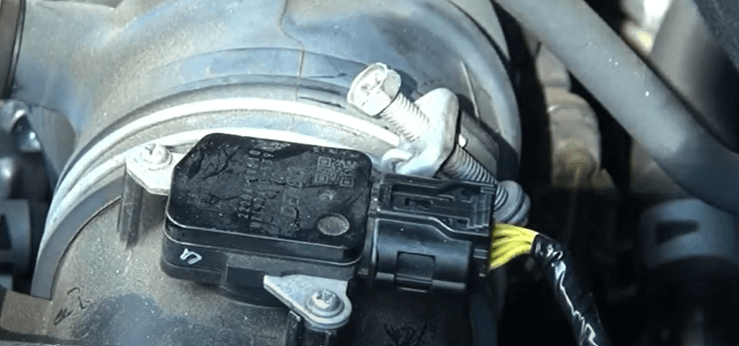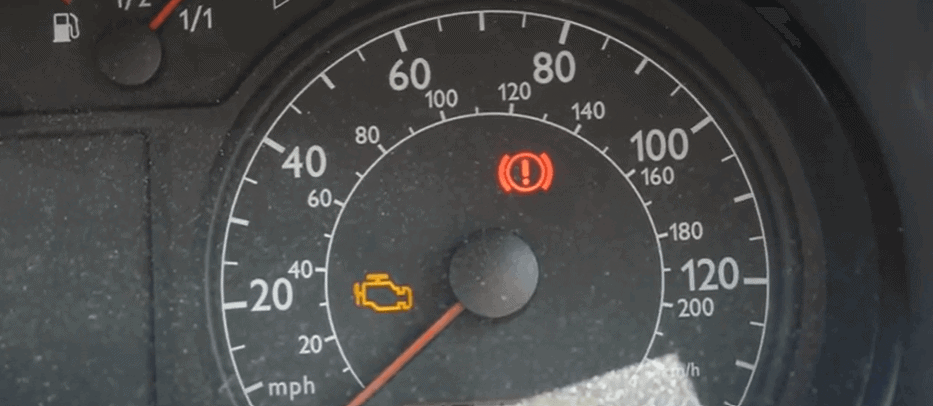Limp mode is quite scary; it can come as a bit of shock when motoring along, and your car won’t go above 30mph suddenly.
Limp mode is a safety feature triggered by an electrical sensor that detects a fault and sends a signal to the car’s ECU (brain). This signal prompts the vehicle to activate the limp home or emergency mode to protect itself. In this article, I will highlight the sensors that can potentially cause limp mode and why. It should be noted that while the closest sensor to the fault may be identified, it may not necessarily be the sensor itself causing the limp mode.
Limp Mode Explained
Limp mode is a system in a vehicle that protects it from causing damage to vital components such as the catalytic converter and engine. When the vehicle enters limp mode, it will restrict acceleration to about 30 mph, stop the engine revs from rising above 3000rpm, and display the check engine light. The car will run without one of the engine cylinders, making driving difficult. This means that the vehicle has a fault and requires urgent repair.
The car will give you just enough power to get off the road and out of trouble, but it’s impossible to continue driving.
Lastly, one other big problem when in limp mode in most cars is that once you key the vehicle off at the ignition, it may not start again.
What Sensors Can Cause Limp Mode?
The following list includes the most common sensors that can cause limp mode, along with a possible cause of the problem. It’s important to note that a sensor can be faulty and require replacement, or it may just be dirty (such as the MAP and MAF sensors). In such cases, the car falsely detects an issue and shows fault codes, which can be resolved by cleaning the sensor and deleting the fault code.
- MAF Sensor – Mass Air Flow sensors, or MAF for short, are renowned for going faulty; dirt and debris pass through this sensor in the air sucked into the engine. The sensor gets contaminated with dirt and fails. A faulty MAF sensor is typically felt when driving along, and limp mode activates when the sensor fails. You should have already noticed driving problems such as sluggish under acceleration, a rough idle, difficulty revving the engine, and the car can stall easily.
- Boost Pressure Sensor – The boost pressure sensor would usually sense a pressure loss from a split boost hose or a join in the pipework that has come loose (usually a broken securing clamp). However, you can have more severe issues, such as a failed turbo, which would cause the boost pressure to trigger limp mode.
- Oxygen Sensor – An o2 sensor usually indicates a catalytic converter fault or, more uncommonly, an issue with the fuelling. These sensors have a lifespan, and although designed to work in a hot environment, they fail easily. O2 sensor failures typically do not cause limp home mode activation. The sensor usually triggers a fault due to another reason.
- MAP Sensor – Manifold Absolute Pressure sensors, or MAP for short, are very sensitive and can become contaminated, similar to a MAF sensor. The MAP sensor can also detect a leak on the intake side of the engine. Again, the faults of a MAP sensor are usually detected before limp mode has been activated. Problems to look for are engine hesitation, stalling, rough idle, sluggish performance, and poor fuel economy.
- Coolant Temperature Sensor – When a vehicle starts overheating, it can cause several sensors to light up the check engine light and put the car into limp mode. The coolant temperature sensor is a very common sensor that fails. When the sensor fails, it will trigger the warning lights on the dashboard, indicating that the car is overheating, even when it is not overheating! There could be other reasons the vehicle might show a fault with the coolant temperature sensor, such as a failed head gasket, a faulty water pump, or even a simple airlock in the water system.
- Throttle Position Sensor – The throttle position sensor monitors the position of the throttle pedal to determine how much air to send to the engine. A faulty TPS sensor will usually cause rough idling and poor engine performance. However, a failed throttle position sensor can cause the engine to go into limp mode in severe cases.
- Crankshaft Position Sensor – The crankshaft position sensor tells the ECU the position and speed of the engine’s crankshaft. When this sensor fails, it can stop the engine from properly controlling the fuel injection and ignition timing. Because of this, you expect to have issues such as engine misfires, stalling, and difficulties starting the engine. Like many sensors, you can expect to experience limp mode if it gets really bad.
- Camshaft Position Sensor – The camshaft position sensor provides information to the engine control unit on the position and speed of the camshaft. Using this information and the information provided by the crankshaft, the ECU can control fuel injection and ignition. When the camshaft position sensor fails or becomes faulty, it can cause various engine problems. One of the most common symptoms is the engine may go into limp mode. Additionally, you may experience poor performance, decreased fuel efficiency, misfires, and engine stalling.
What Are Other Causes for Limp Mode?
There are many other reasons for a car entering limp mode and not just electrical sensors; some are vehicle-specific and commonly occur on specific vehicles. Some of the reasons why a sensor may detect an issue that is not actually caused by the sensor itself. Here is a short list of some of the other causes of limp mode:
- Boost Leaks – Boost pipes can collapse or split, causing the car to hold back, and the closest boost pressure sensor will acknowledge this problem.
- Air Leak – Air leaks from the intake manifold or pipework will cause the car to react the same way as a boost leak. A sensor like the MAF or MAP will detect a problem.
- Transmission Faults – Not on every vehicle, but clutch and drivetrain problems can cause limp mode, specifically on automatic transmission vehicles.
- Low Fluid Levels – All fluid levels apart from the windshield washer fluid, of course, could cause a problem; although a low fluid level won’t cause limp mode, the reason the fluid is low might.
- Braking Issue – Brake fluid level leaks and ABS problems could cause limp mode; this is on certain vehicles, not all.
- Faulty Wiring – Split or broken wiring leading to any essential engine sensors will make the ECU think there is an issue with the sensor causing limp mode.

What Should You Do If Your Car Goes Into Limp Mode?
If your car goes into limp mode and you are just a few miles from home, it may be possible to limp the car home. However, depending on the cause, you may be causing more damage than good. I recommend you pull over immediately and have the vehicle towed home; driving is not worth the risk when you cannot drive properly.
Can You Bypass Limp Mode?
There are a few ways to bypass limp mode. Some aren’t possible while you’re out on the road and require a visit to a mechanic, but there is a checklist you should follow to either bypass limp mode or force the car into thinking the problem is sorted:
- Check the fluid levels and top up where necessary – brake fluid or coolant levels causing a problem may fix the whole issue, and the car will come out of limp mode once the vehicle senses these are rectified. It’s a very rare occurrence, but it’s always worth checking first.
- Restart the vehicle after allowing it to cool – as it says on the tin, if an overheating sensor is causing limp mode, the car will work as normal once it has cooled sufficiently. However, once it overheats again, you’ll return to limp mode.
- Clear the fault code with an OBD reader tool – If you cannot access an OBD tool, skip to the next step. Clearing the fault code will almost certainly rectify being in limp mode; however, a severe fault will immediately throw the light back on, and the car will return to limp mode in jiffy.
- Disconnect and reconnect the car battery – Disconnecting and reconnecting the battery is a way of clearing stored fault codes, but it doesn’t work on every vehicle. Still, it is the factory reset procedure; the sensors will recalibrate, and hopefully, the car should come out of limp mode temporarily.
- Repair the fault – It may not be as straightforward as it sounds, but it will undoubtedly stop limp mode.
How to Repair a Car in Limp Mode?
If your vehicle is in limp mode, repairing the fault will likely resolve the issue. First, you must connect the car to an OBD2 diagnostic computer, which most good mechanics have. By doing so, the diagnostic tool will read the fault code that helps you identify the cause of the problem. Once you have the fault code, you can find ways to fix it. Sometimes, it may be pretty straightforward, such as a sensor needing plugging back in or the fault code needing clearing.
Sometimes, your mechanic may suggest deleting the code and driving the vehicle to check if it re-enters limp home mode or if the fault code reappears. Some fault codes may be insignificant and easily resolved. For instance, a tiny particle of debris in the fuel tank that enters the injectors could cause a brief fuel ignition issue, disappearing as soon as the debris is burned or expelled through the exhaust. Such a problem is minor and can be fixed by clearing the fault code, but you won’t know if this will work until you try it.
Bottom Line
Limp mode can be a pain but can save you a nasty repair bill in the long run. Usually, limp mode is the last resort, and the car will have been giving you an indication there was an issue beforehand.
It is almost impossible to diagnose the fault without plugging the vehicle into a diagnostic machine if you notice a minor difference in how your vehicle drives, consider taking the car to your mechanic to have them assess the issue before something like limp mode causes a more significant problem.

